Most Americans turn their thoughts to spring when the calendar turns to April. April is normally the month for tulips, Easter celebrations, spring breaks, and the return of warm-weather sports such as baseball. However, April can also bring wild weather swings in much of the United States, especially in northern or mountainous states. Americans in these regions may wear shorts one day and don their winter coats the next.
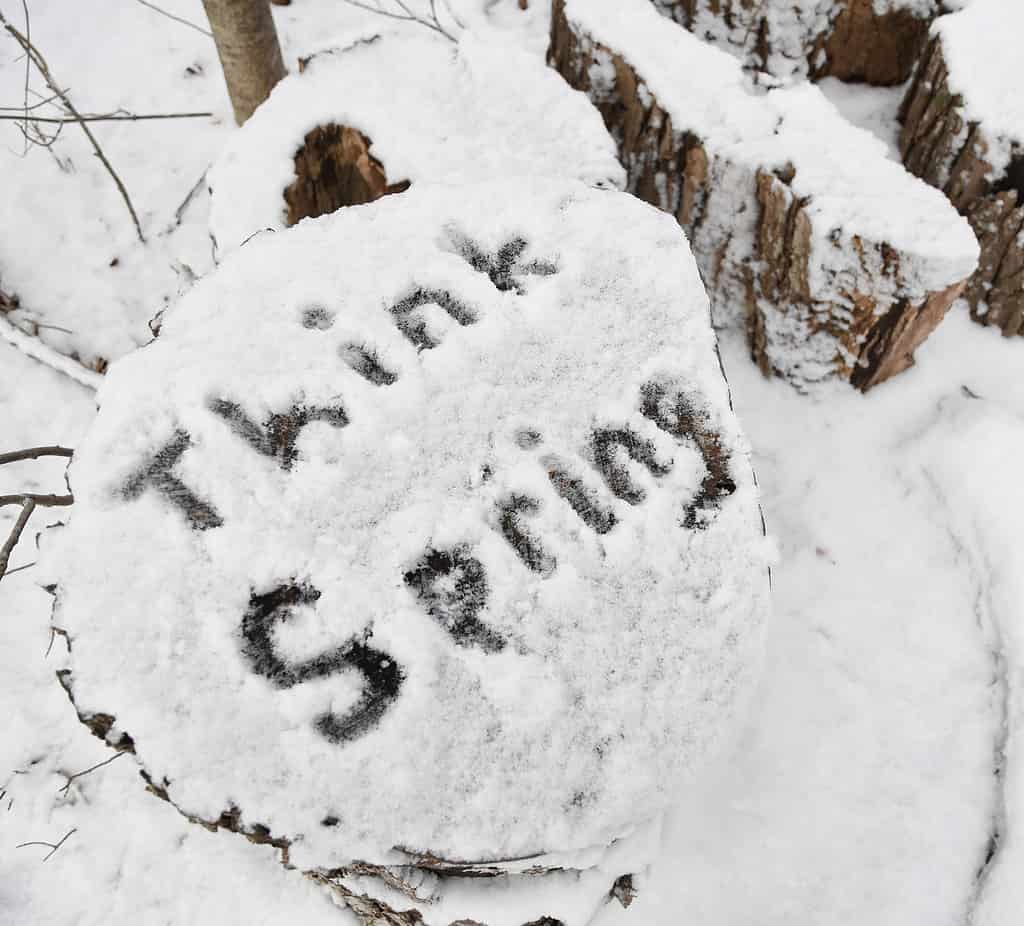
A massive April snowstorm can make it hard to “Think Spring,” as seen on these logs in New England after a late-season snowstorm.
©Andrew Cline/Shutterstock.com
April Snowstorms
April snowstorms can bring an unwelcome chill to springtime activities, but most of these snow events are relatively light. For example, the average snowfall in Boston in April is under two inches, less than five percent of the city’s average snowfall for the entire season. April snows often cause more annoyance than actual disruption. However, the U.S. has experienced some calamitous winter storms in April. One, in particular, stands out above all the others.
The Great April Fool’s Day Snow of 1807
The granddaddy of all U.S. April snowstorms occurred early in American history. On April 1, 1807, a crippling snowstorm pounded the young nation.
Historical Context
For some context, the Revolutionary War was still fresh in the minds of many Americans. The Treaty of Paris that officially ended the war had been signed less than 24 years prior.
Thomas Jefferson, the nation’s third president, was in office.
There were only 17 states, with Ohio being the most recent to achieve statehood. It would be another five years before the next state, Louisiana, would be admitted to the Union.
The National Weather Service, which tracks and records U.S. weather, hadn’t been formed yet. It would not come into being until more than 60 years after this historic storm.
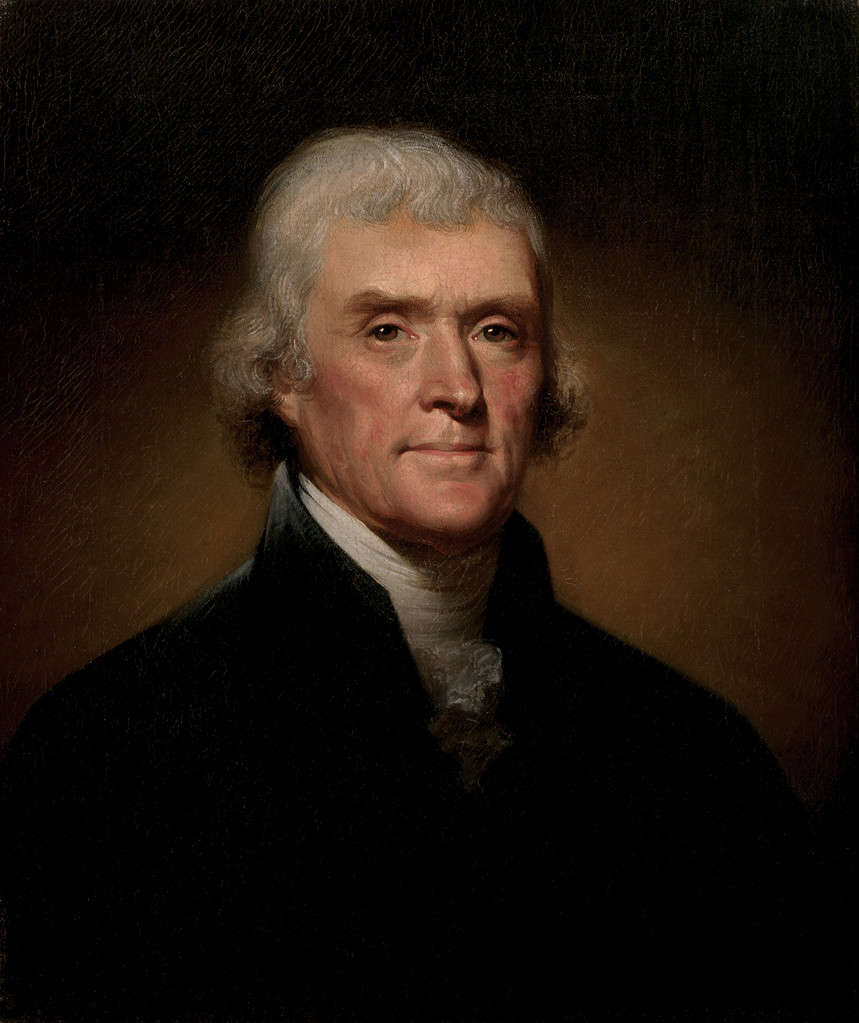
Thomas Jefferson was the president during the United States’ largest-ever April snowstorm.
©Rembrandt Peale / Public domain – License
An April Snowstorm for the Ages
This storm became known as the Great April Fool’s Day Snow of 1807, but it was certainly no joke. A late-season snow in the northeast United States often comes courtesy of a nor’easter, but this storm was different. A low-pressure system moved northward from the lower Tennessee Valley across the mid-Atlantic states. The snowfall totals on the northern side of this storm were beyond belief.
- 42-48 inches in Norfolk, Connecticut
- 48 inches in Montpelier, Vermont
- 52 inches in Montrose, Pennsylvania
- 52 inches in Lunenburg, Vermont
- 54 inches in Scranton, Pennsylvania
- 54 inches in Utica, New York
- 60 inches in Danville, Vermont
Those snowfall totals would be huge even in the middle of winter, but remember, this happened in April!
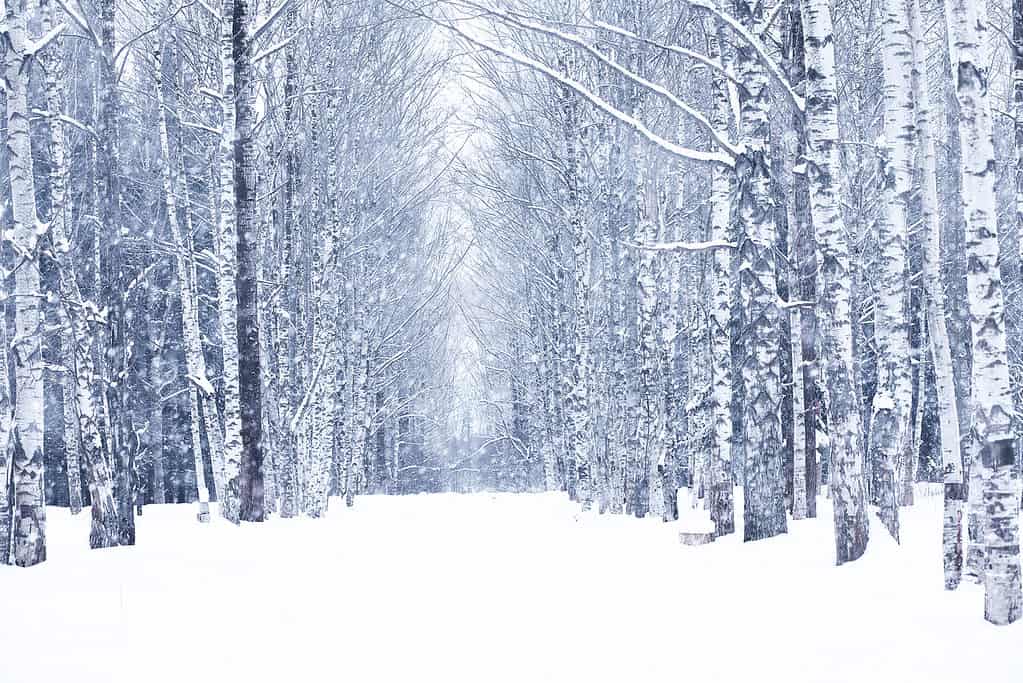
The United States was hit with a historic winter storm in April 1807.
©iStock.com/alexkich
Not only were the snowfall totals nearly unfathomable, but the storm itself was gigantic. Nearly a foot of snow was recorded as far west as Vincennes, Indiana. That is about 900 miles from Danville, Vermont! Vincennes is situated on Indiana’s border with Illinois, though neither was a state at the time of this historic snowstorm. The region was still part of the Indiana Territory in 1807. Vincennes was the capital of the territory at the time.
There are no pictures of this cataclysmic snowfall since the photographic camera would not be invented until nine years after this storm. Records of the aftermath are also sketchy, such as the number of deaths caused by this mammoth storm. All we can do is imagine just how shocking and difficult it must have been for those early Americans who endured the snowstorm. Even with modern snow removal technologies, a storm of such proportions would be paralyzing in the twenty-first century. Just imagine how such an event would have crippled the fledgling United States early in the nineteenth century!
Other Massive April Snowstorms
While none are equal to the Great April Fool’s Day Snow of 1807, the U.S. has experienced a handful of other giant April snowstorms.
The Great California Storm of April 19-23, 1880
This storm was mainly an extreme rain event. Just how extreme was it? Sacramento received 7.24 inches of rain in 24 hours on April 20-21. The city received a two-day total of 8.37 inches. The total rainfall from the storm measured 8.81 inches. All of these measurements still stand as records for California’s capital city.
This storm was likely produced by an atmospheric river, a term that has been popularized only recently. These “sky rivers” are atmospheric bands that carry moisture from the tropics. Large atmospheric rivers can carry moisture equivalent to the flow of the Mississippi River.
The atmospheric river that hit California in April 1880 pummeled much of the central part of the state with rain. Still, the precipitation changed to snow in the upper elevations of the Sierra Nevada with apocalyptic accumulation totals.
Norden saw 194 inches of snow. That is over 16 feet! It is the largest single-storm snowfall ever recorded in the continental United States. The Donner Pass area saw nearly 25 feet of snow for the entire month of April 1880, much of which fell during this one storm.
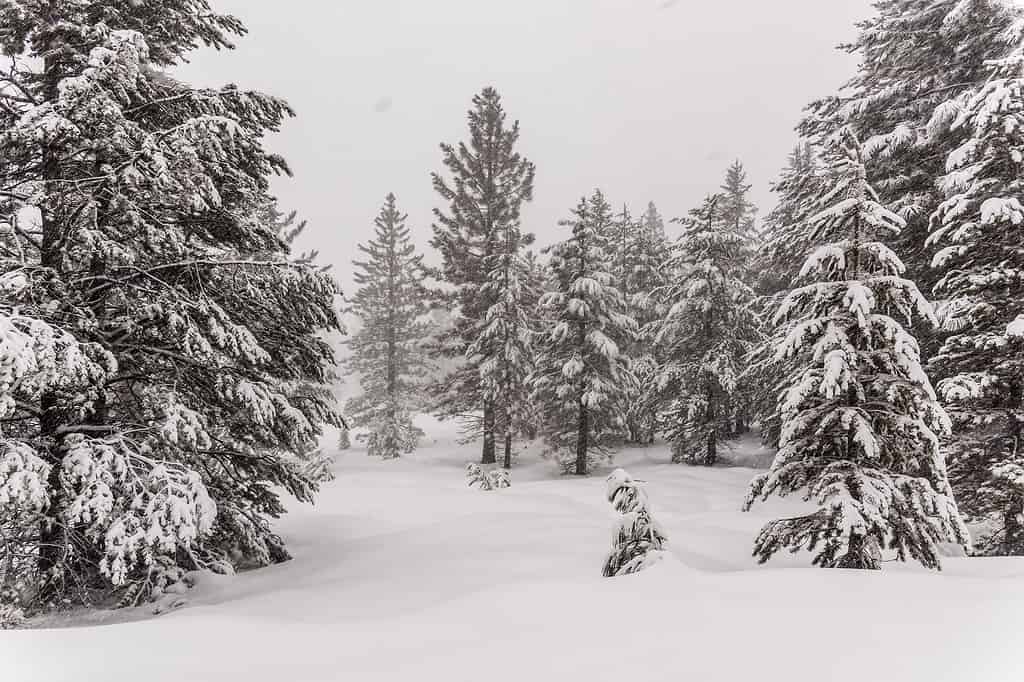
Donner Pass in the Sierra Nevada mountain range received nearly 25 feet of snow in April 1880!
©iStock.com/Bill_Dally
The Spring Snowstorm of April 2-5, 1987
A prolonged and heavy snowstorm bombarded southeast Kentucky and much of the central and southern Appalachian Mountains early in April 1987. It snowed for four days straight, and the accumulation totals were staggering.
Newfound Gap, which sits on the border of North Carolina and Tenessee in the upper elevations of the Great Smoky Mountains National Park, received 60 inches of snow.
John W. Flannagan Dam & Reservoir in the Cumberland Mountains of Dickenson County, Virginia, recorded 36 inches.
Carr Fork Lake (now known as Carr Creek Lake) in southeast Kentucky’s Knott County saw 27.5 inches. Much of the state’s southeast region was buried by this storm. Letcher County, situated on Kentucky’s border with Virginia, saw snow drifts that measured over ten feet deep!
The storm largely affected rural areas with low population densities, but it still knocked out the electricity for over 18,000 people and left roads unpassable for days.
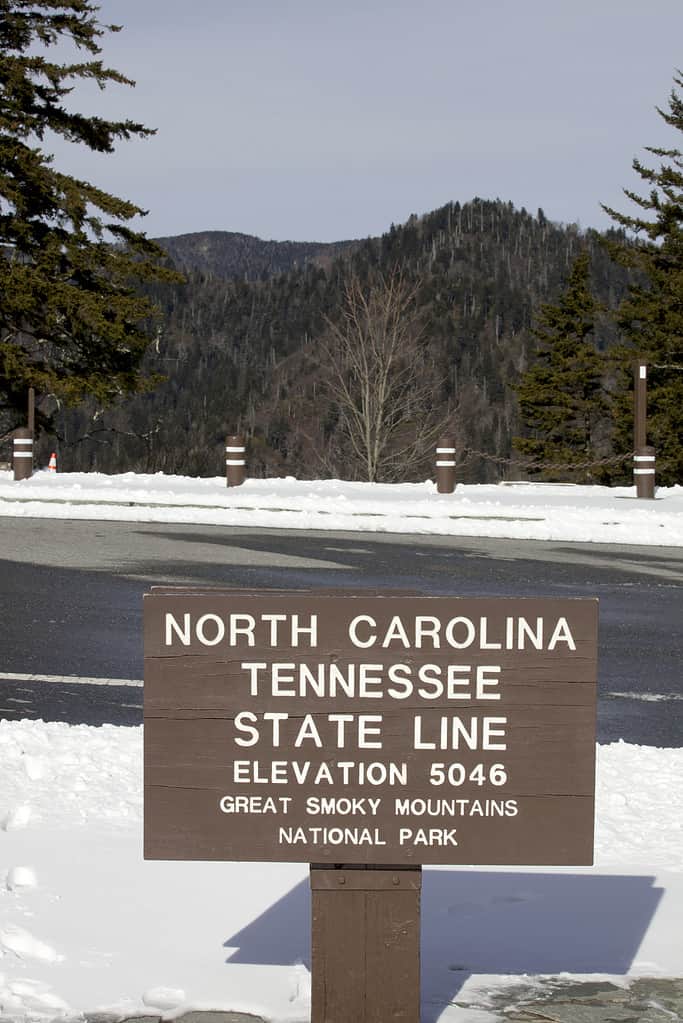
Newfound Gap in the Great Smoky Mountains National Park received 60 inches of snow during this storm.
©iStock.com/Aneese
The April Fool’s Day Blizzard of 1997
While it didn’t rise to the level of the historic storm on April Fool’s Day in 1807, this April Fool’s Day storm 190 years later would also be one for the books.
The winter of 1996-1997 had been a mild one for New England. For example, by the end of March, Boston had only received 26.5 inches of snow, well below its seasonal average of 40 inches. However, that seasonal snow deficit would turn into a surplus in just one storm.
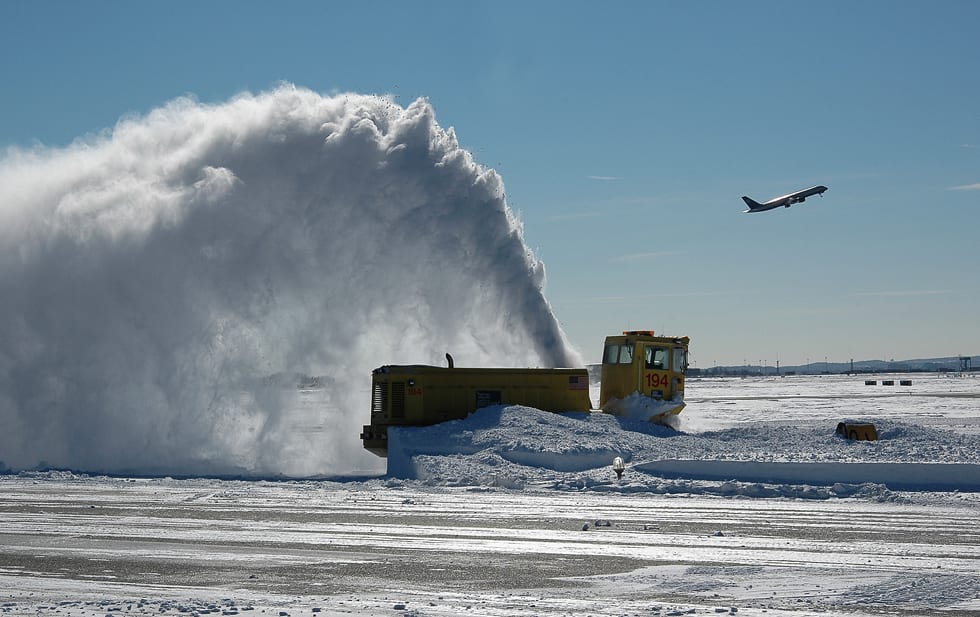
Boston Logan International Airport is no stranger to snow, but April 1, 1997, brought a new record for a single day’s accumulation.
©MassDOT / Public domain – License
A powerful nor’easter slammed into New England on April 1, 1997. Boston Logan International Airport received 25.4 inches of snow, a new record for one-day snow accumulation at the airport. It was the fourth biggest snowstorm overall in Boston history, and it made April 1997 the snowiest April the city had ever seen.
The wind whipped through Boston, registering speeds up to 54 miles per hour. A wind gust of 72 miles per hour was recorded in Blue Mountain, Massachusetts. Worcester, Massachusetts, received 33 inches of snow, while Milford, Massachusetts, saw 36 inches. Portions of the Catskill Mountains in New York State received up to 40 inches of snow. The storm stretched down the Atlantic coast, as well. Areas of New Jersey saw up to 24 inches of snow.
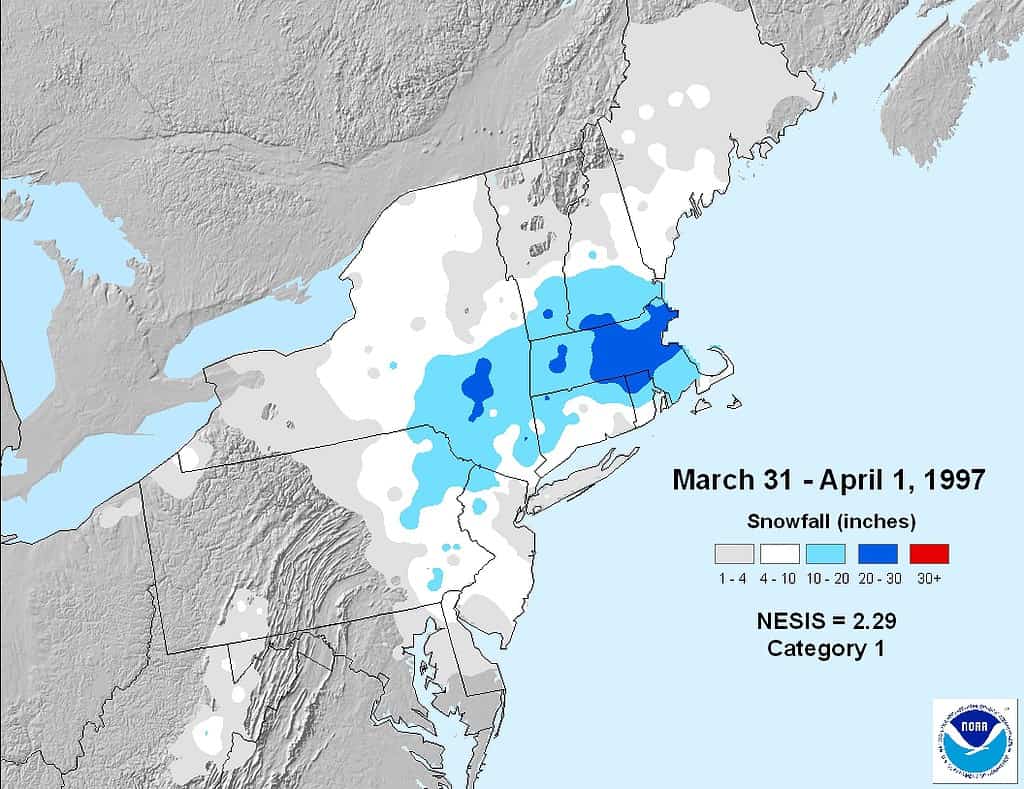
The April Fool’s Day Blizzard of 1997 brought massive snowfall accumulations.
©Transferred by Allwham (talk) 14:51, 16 September 2010 (UTC) / Public domain – License
The storm wreaked havoc in New England, knocking out power for over 100,000 people. NBC Connecticut posted a video recalling the nightmares caused by this massive nor’easter.
If this blizzard was an April Fool’s Day joke, no one in the path of the storm was laughing.
The photo featured at the top of this post is © Charles Collard/Shutterstock.com
Thank you for reading! Have some feedback for us? Contact the AZ Animals editorial team.






